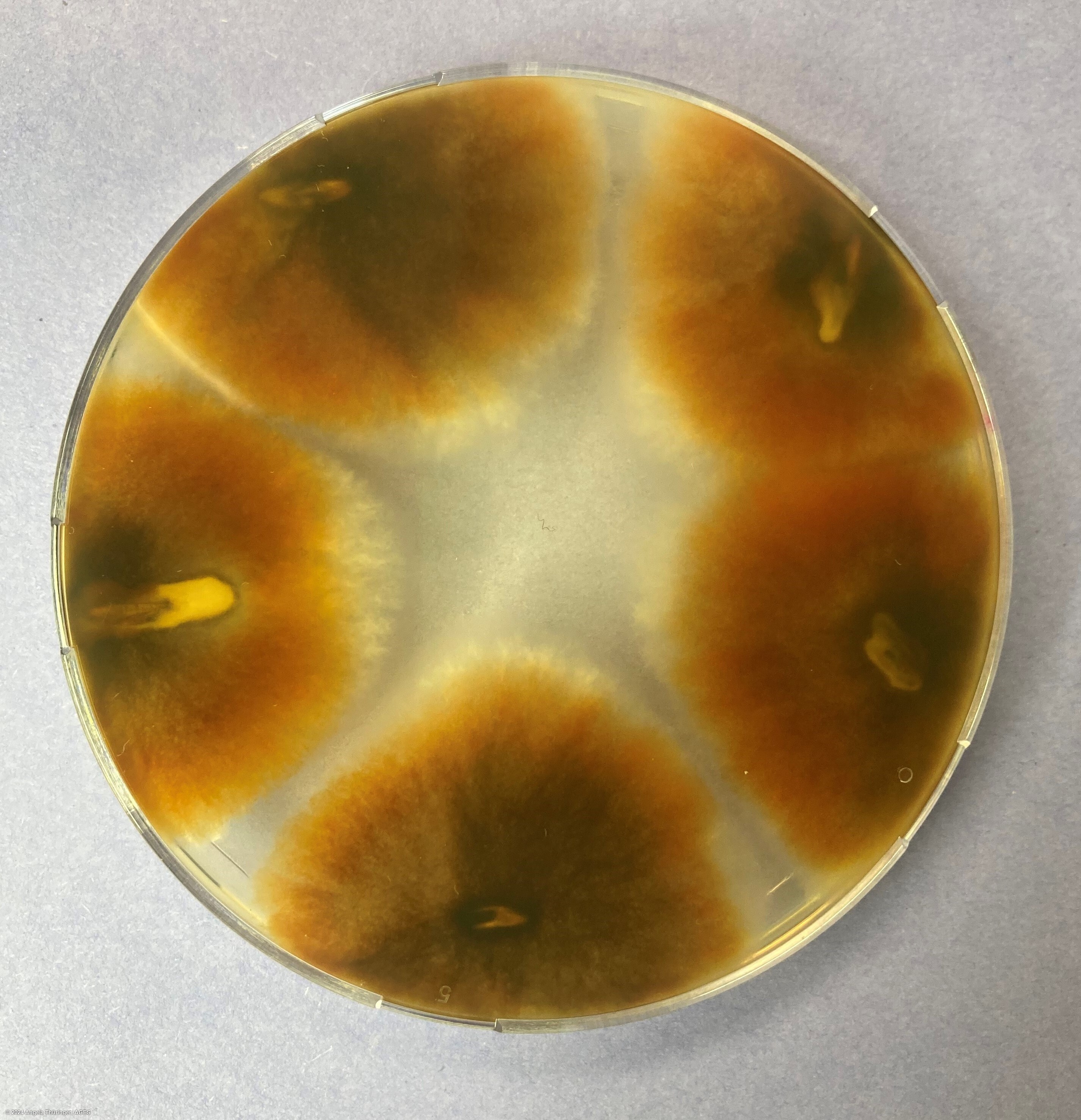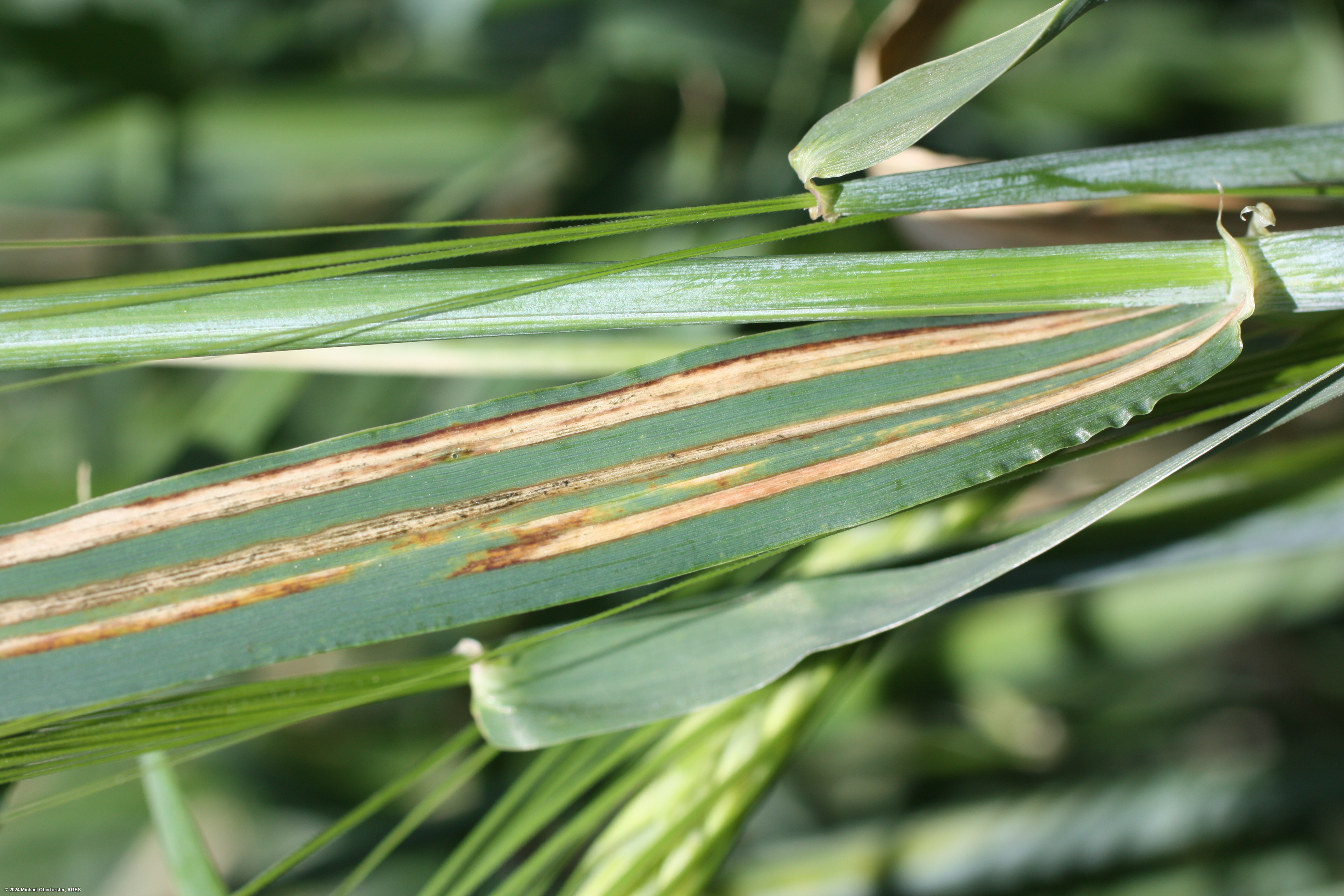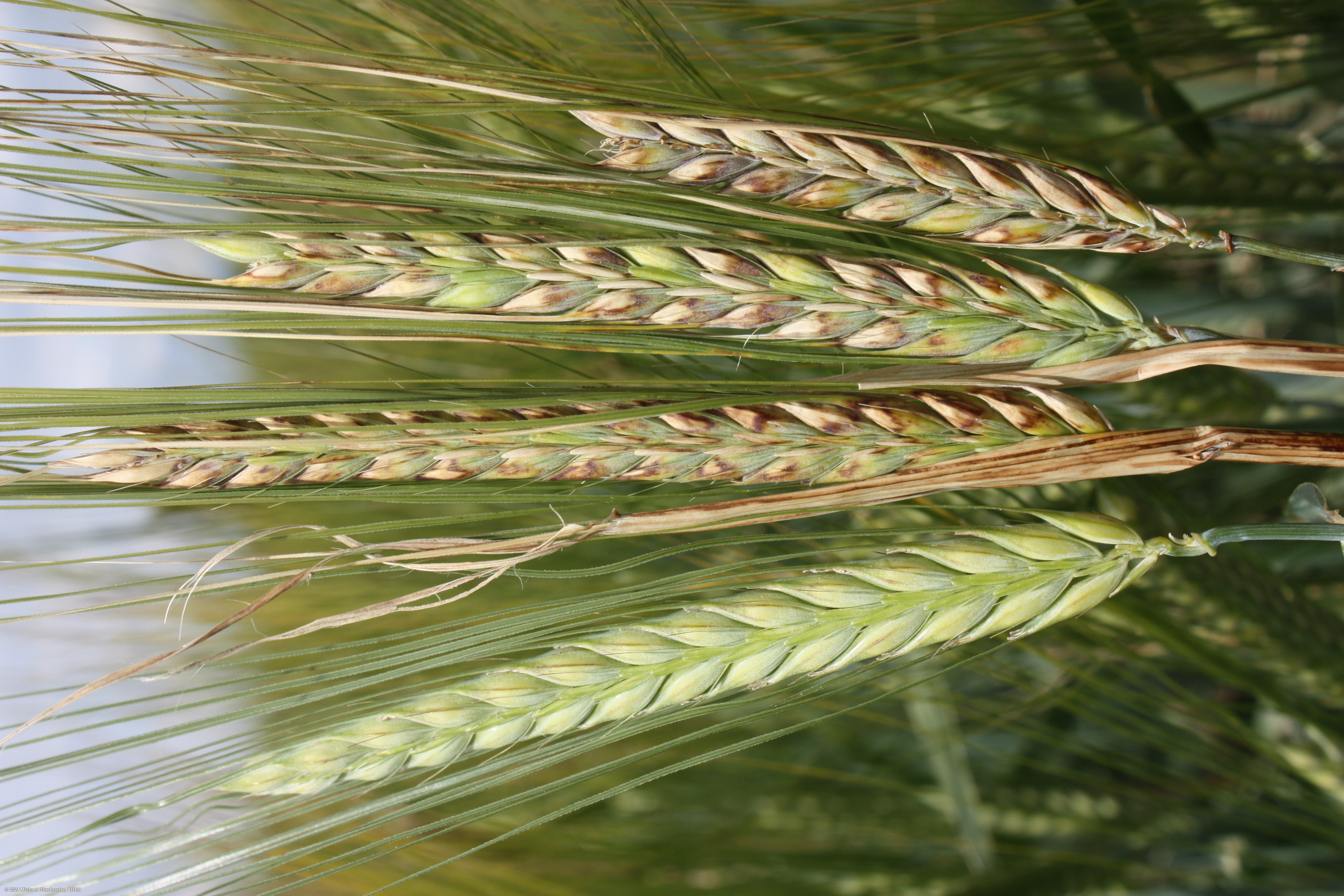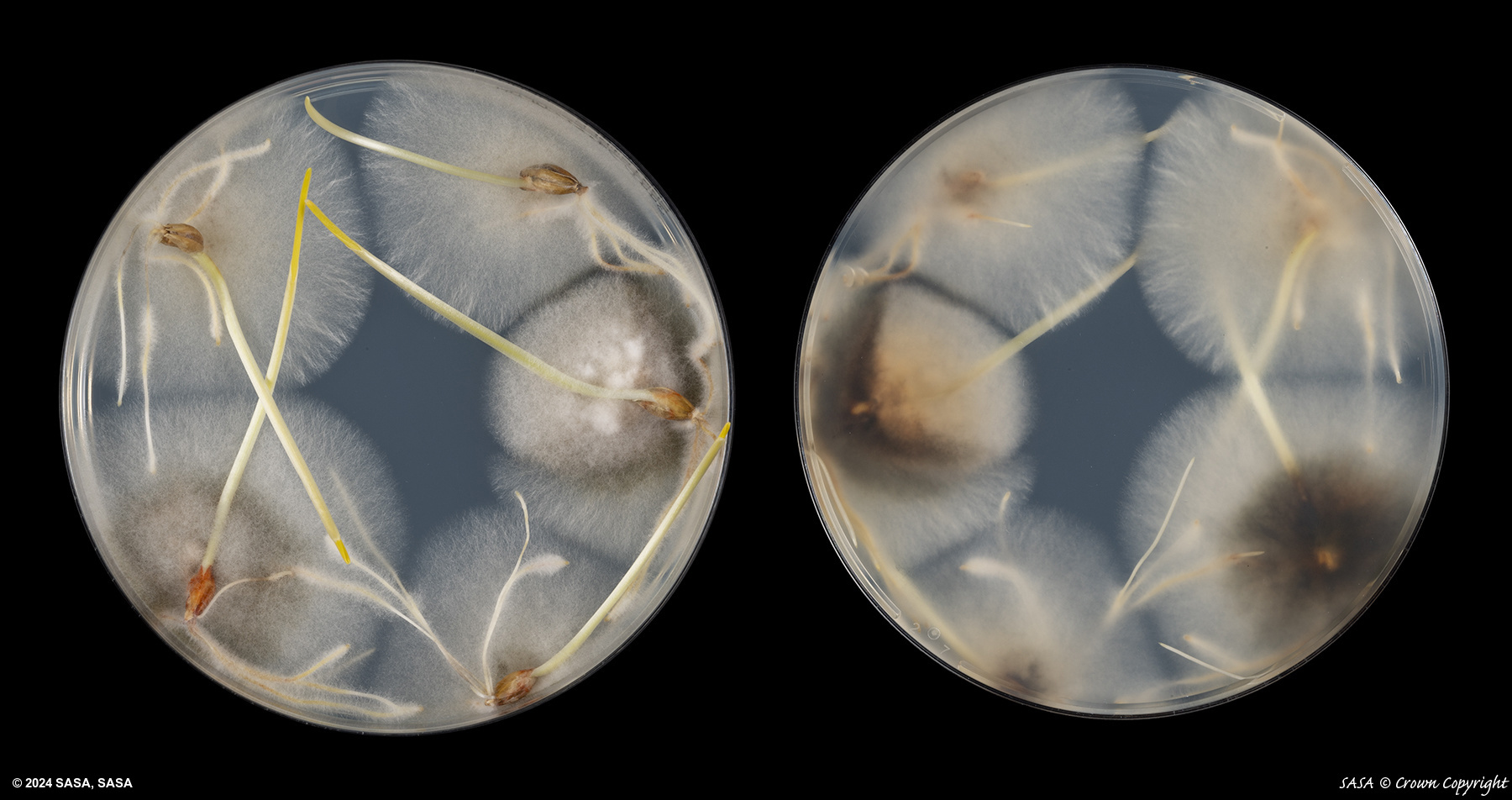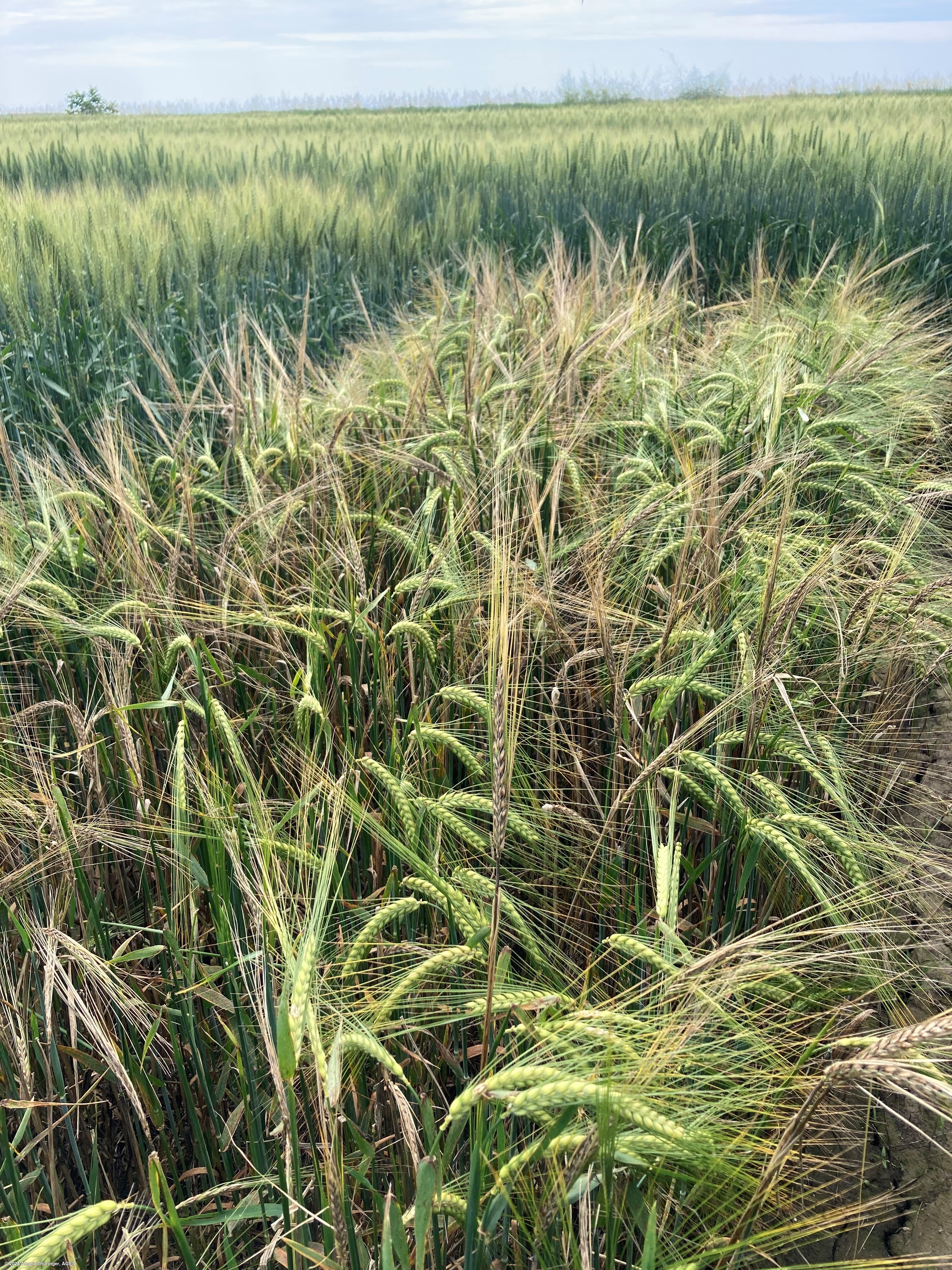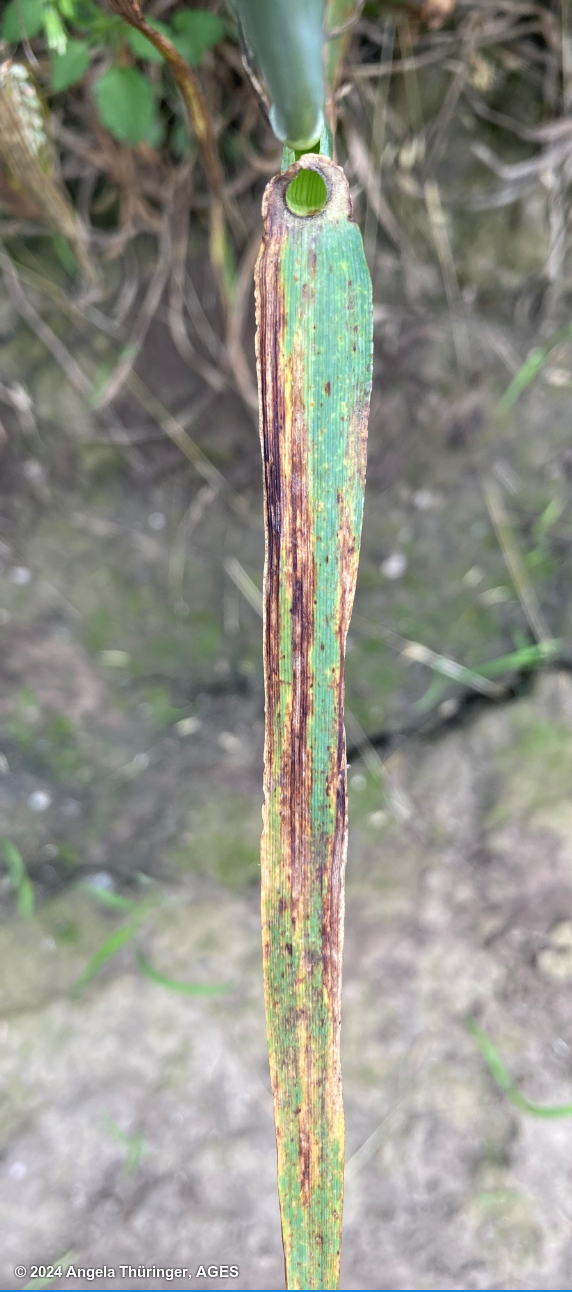Pyrenophora graminea
Overview
|
Scientific name
|
Pyrenophora graminea |
|
Genus
|
Pyrenophora |
|
EPPO code
|
PYRNGR |
|
Common name
|
Barley leaf stripe |
|
Synonyms
|
Drechslera graminea |
Description
From ISTA 7-027 method using omsotic method (growth on filter paper moistened with sugar solution):
On blotter paper, P. graminea cannot be distinguished from P. teres, as both produce the same pigment - catenarin. The infected seeds produce brick-red pigements (anthraquinones) under certain conditions (correct temperature, bright light and adequate moisture). When a wehat solution of NaOH is added, the pigments will turn from brick-red to violet.
From ISTA working sheet No. 6:
On PDA or malt agar, after 7 days growth in darkness at 20-22C. Colonies should exibit variable aerial mycelium which is grey-light olive green with a hyaline margin. It is common for no conidia to be formed. Radiating pigmented hyphae on teh reverse surface are olive green to dark brown in colour, often with an orange tinge and can be seed by naked eye or at x25-40 magnification. Pycnidia may be present on the seed.
On blotter, use the freezing blotter method, or surface sterilize with sodium hypochlorite. Examine the seeds after a minimum of 5 days growth with alternating light:darkness cycles at 20C. Using a stereoscopic microscope at x25-40 magnification, look for conidiophores and conidoa of P. graminea. Pale to mid-brown conidiophores arise singly or in groups of 2-6 and are straight or flexuous. Conidia are sub-cylindrical, hyaline to golden brown, straight or very slightly curved. Secondary conidiophores are formed from apical and basal cells of conidia, and secondary conidia, sometimes in chains, are produced. Under the compound microscope, at x400, conidiophores may be up to 250 μm long, but are usually much shorter. They are 6-9 μm thick and swollen at the base. Conidia are 40-105 x 14-22 μm, with 1-7 pseudosepta.
From ISTA's Common Laboratory Seed Health Testing Methods for Detecting Fungi:
Conidiophores dark brown, shiny, short to medium, usually bearing much darker cylindrical conidia in chains of 2-3. The chains can be branched and especially under excessive humid conditions or on frozen seeds, the conidia can be in long chains. Black pycnidia with few, black, stiff setae may be observed on the seed surface.
Conidia smooth walled, brown, cylindrical, frequently broader at the basal part and tapering towards the apex, cells usually shorter than broad, especially the basal cells, short secondary conidiophores present, 1-4 distoseptate, 27-65 x 12-19μm.



